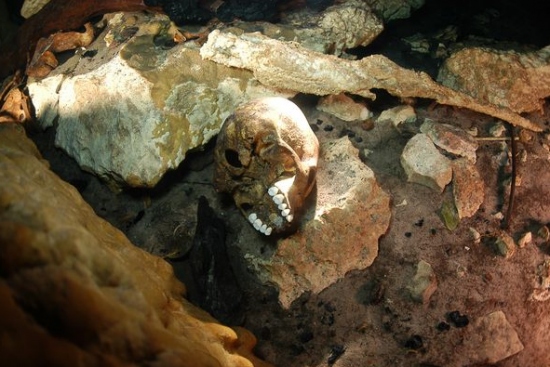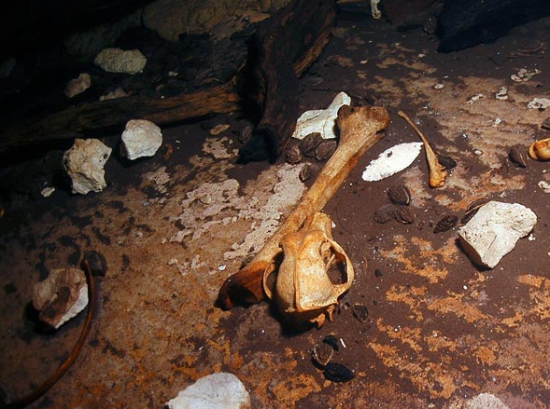
CIV 101 - 201 : Civilisations précolombiennes mésoaméricaines / Mesoamerican Civilizations
ECR 102 : Introduction à l’écriture maya / Introduction to Maya Hieroglyphic writing
REL 201 : Divinités précolombiennes mésoaméricaines / Precolombian religions in Mesoamerica

Photograph courtesy Tamara Thomsen
Ceramic vessels (such as the one pictured), animal bones, jade beads, shells, and knives were found with the submerged human remains at the Maya site. These items were likely part of the sacrificial ritual—their presence "is another reason to believe that this arrangement is a mortuary offering," Anda said.
The bones and artifacts were found underwater—about 85 feet (26 meters) below ground level and about 16 feet (5 meters) below the current water level—but they were likely deposited in the passageway when the water was lower, due to drought.

Photograph courtesy Tamara Thomsen
Another of the underwater human skulls found in the Holtun cenote rests on a rock. Analysis of the skull revealed signs of a lethal blow, Anda wrote in a paper on the find presented during the April 2011 meeting of the Society for American Archaeology.
Charcoal pieces found around the skull suggest that fire was part of the ritual associated with this individual, Anda noted. Though Maya sacrifice victims were typically war captives, the human remains found in the Holtun cenote don't display telltale signs of nutritional stress, Anda told National Geographic News.

Photograph courtesy Tamara Thomsen
Near the center of the underwater ledge, the researchers found a human tibia—or shin bone—close to a dog skull, a flint knife, and deer bones.
The finding of these undisturbed remains will allow researchers to make "more precise interpretations about what the ritual activity in the cenotes of the important city of Chichén Itzá was," Anda said.
The discovery was a natural one for Anda, given his complementary careers as a professional cave-diving instructor and archaeologist. "My specialty," he noted, "is the study of cenotes with a special focus on rituals related to death."